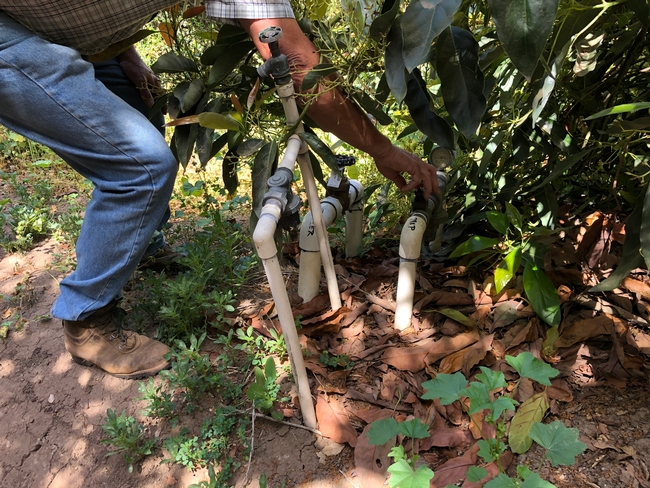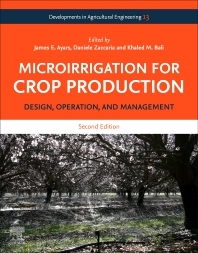- Author: Ben Faber
Microirrigation for Crop Production: Design, Operation, and Management, Second Edition is the latest release in this go-to foundational resource for the basics of engineering and the science of the design and operation of micoirrigation systems. This new edition includes novel methods for measurement and estimation of evapotranspiration, resource-efficient microirrigation design and operation, advanced irrigation scheduling methods and tools, novel methods and technology of microirrigation automation, monitoring and control, updates in crop salinity tolerance and leaching practices, variable rate irrigation, updates on the use of biological effluents and chemicals and pesticides to include safety and regulatory concerns.The revised book provides an understanding on the basic science needed to comprehend systems design, operation, management, maintenance, monitoring and performance evaluation.
Editors: James E. Ayars, Daniele Zaccaria, Khaled M. Bali
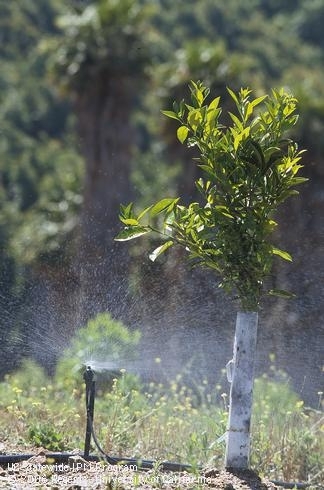
- Author: Ben Faber
SWEEP 2023 opening soon!
The State Water Efficiency Enhancement Program
READ ALL ABOUT IT
https://www.cdfa.ca.gov/oefi/sweep/
Get your paperwork ready!
SWEEP 2023 will release $23 million in funding this round, looking to open by the end of this year. It will be returning to a competitive grant process, so applications can be submitted anytime within the open application window.
Proposed (but not finalized changes) include:
- Parcels that have previously received SWEEP funding are eligible to apply again.
- Socially Disadvantaged Farmers and Ranchers will be prioritized with a minimum of 25% of funding.
- Strengthened ways to ensure one user does not submit multiple applications. In addition to needing separate tax ID numbers, each application will need a separate mailing address and grant contact.
- Changes to the scoring rubric to prioritize 'well-rounded' projects. (We will have more clarity on this in the final draft)
To view the full draft grant proposal for SWEEP, click here.
As always, if you are interested in applying to SWEEP, you will need to gather three things before beginning an application:
1. Recent pump efficiency test(s)
2. 12 months of energy records for each pump (electric bills and/or fuel logs)
3. Quote(s) for proposed project.
For free assistance in beginning an application or if you have further questions, please contact your local climate-smart agriculture education specialist: https://ciwr.ucanr.edu/Programs/ClimateSmartAg/TechnicalAssistanceProviders/
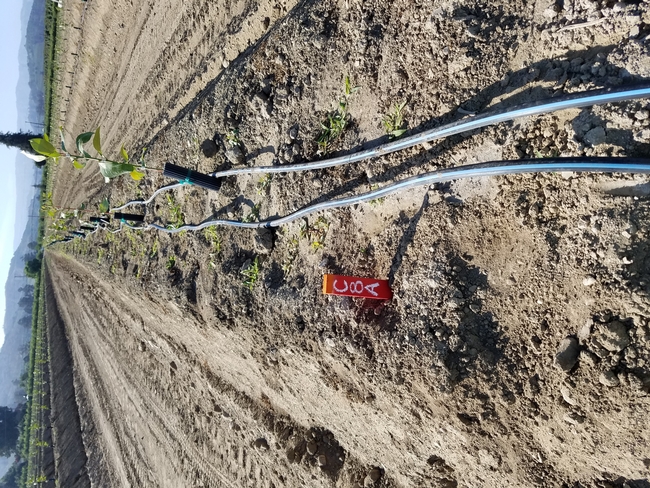
- Author: Ben Faber
Avocado Irrigation Workshop
August 10 (Thursday), 2023
1:00 – 4:00 P.M.
San Diego Farm Bureau
420 S Broadway, Escondido, CA 92025
Workshop registration link:
https://surveys.ucanr.edu/survey.cfm?surveynumber=40798
1:00 - 3:30 p.m. Agenda
1:00 Welcome
1:05 Challenges Due to Climate Change and Tools and Resources to Manage Risks - Dr. Tapan
Pathak, CE Specialist in Climate Adaptation in Agriculture, University of California, Merced
1:35 Interpreting Your Water and Soil Analysis Reports to Manage Your Avocado Grove – Dr.
Ben Faber, UCCE Subtropical Crops Advisor, Ventura and Santa Barbara Counties
2:05 Cost-effective Irrigation Tools for Efficient Water Management of California Avocados – Dr.
Ali Montazar, UCCE Irrigation and Water Management Advisor, San Diego, Imperial, and
Riverside Counties
2:35 Considerations about the Use of Plant-Based Sensors for Avocado Irrigation Scheduling –
Dr. Jochen Schenk, Professor of Department of Biological Science, California State University,
Fullerton
3:05 Development and Evaluation of Pathogen and Salinity Resistant Avocado Rootstocks – Dr.
Patricia Manosalva, Professor of Plant Pathology and Microbiology Department, University of
California, Riverside
3:35 RCD of Greater San Diego County Irrigation Management Programs and Projects – Joel
Kramer, Resource Conservation District of Greater San Diego County, Lakeside
4:00 ADJOURN
For more information about the workshop, please contact Ali Montazar, amontazar@ucanr.edu.
PENDING CEU CREDITS: CCA (3.0 hrs.)
SDRILG (3.0 hrs.)
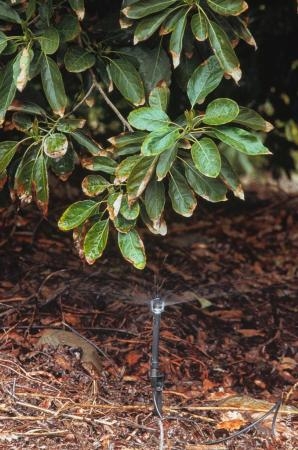
- Author: Ben Faber
Avocado Irrigation Workshop
July 18 (Tuesday), 2023
1:00 - 4:00 P.M.
In Person
United Water Conservation District
1701 Lombard St Ste 200, Oxnard, CA 93030
AGENDA
1:00 Welcome
1:05 Drought and Heat Effects on Avocado – Dr. Ben Faber, UCCE Subtropical Crops Advisor,
Ventura and Santa Barbara Counties
1:35 Challenges due to climate change and tools and resources to manage risks - Dr. Tapan Pathak,CE Specialist in Climate Adaptation in Agriculture, University of California, Merced
2:05 Tools and Information for Effective Irrigation Management in California Avocados – Dr. Ali Montazar, UCCE Irrigation and Water Management Advisor, San Diego, Imperial, and Riverside
Counties
2:35 Strategies in Managing Salinity in Avocado Production – Dr. Peggy Mauk, Director of Agricultural Operations and Professor of Extension, University of California, Riverside
3:05 Water Cost in High Density Avocado Planting and Profitability – Etaferahu Takele, UCCE Area Farm Management/Agricultural Economist in Southern California, San Bernardino
3:35 Ventura County RCD Irrigation & Nutrient Management Programs and Projects – JamieWhiteford, Ventura County Resource Conservation District, Ventura
4:00 ADJOURN
For more information about the workshop, please contact
Ali Montazar, amontazar@ucanr.edu
or Ben Faber, bafaber@ucanr.edu.
PENDING CEU CREDITS:
VCAILG (3 hrs.)

- Author: Ben Faber
Avocado Irrigation Workshop
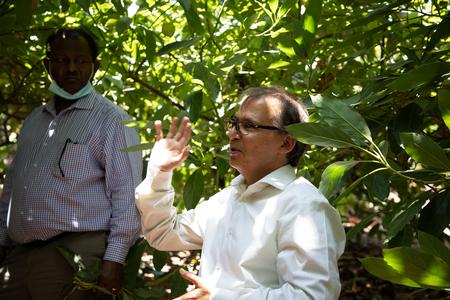
San Diego County Farm Bureau
Description:
This training workshop aims to focus on irrigation management related issues including drought and heat effects; irrigation management tools and information under development in California avocados; mapping salinity and strategies in managing salinity; water costs and planting density; and supporting programs for avocado growers.
Resources
Dr. Ali Montazar
UCCE Irrigation and Water Management Advisor, San Diego, Riverside, and Imperial Counties
Ali's UCANR Faculty Profile
Irrigation Management Tools and Information Under Development in California Avocados
Presentation Slides (PDF Slides, 8.30 MB)
Dr. Ben Faber
UCCE Subtropical Crops Advisor, Ventura and Santa Barbara Counties
Ben's UCANR Faculty Profile
Drought/Heat/Salt Induced Orchard Problems:
Presentation Slides (PDF Slides, 1.34 MB)
Dr. Dennis Corwin
Senior Research Soil Scientist, USDA Salinity Laboratory, Riverside
Dennis's USDA ARS Profile
Mapping Soil Salinity at Field Scale Using Geophysical Techniques:
Presentation Slides (PDF Slides 7.68 MB)
Dr. Peggy Mauk
Director of Agricultural Operations and Professor of Extension, University of California, Riverside
Peggy's UCANR Faculty Profile
Strategies in Managing Salinity for Avocado Production:
Presentation Slides (PDF Slides 3.01 MB)
Etaferahu Takele
UCCE Area Farm Management/Agricultural Economist in Southern California, San Bernardino
Etaferahu's UCCE Faculty Profile
High Density Avocado Planting: Impacts on Productivity and Water Cost:
Presentation Slides (PDF Slides 1.36 MB)
Agricultural Economics/Farm Management:
References:
- Avocado Sample Establishment and Production Costs and Profitability Analysis for San Diego and Riverside Counties. (link)
- 2020 Avocado Establishment and Production Costs and Profitability Analysis in High Density Planting. (link)
- Better growing: by Gary Bender. High Density Avocado Production, A Method to Improve Yield Per Acre. (link)
Luis Ramos
Mission Resource Conservation District (RCD), Fallbrook
Luis's Mission RCD Profile
Mission RCD Water Management:
Other Resources:
Irrigation Management -
Cal-Adapt
https://cal-adapt.org/tools/extreme-heat/
CIMAS- California Irrigation Management Information System
http://www.cimis.water.ca.gov/
UCCE- Agricultural Water Quality Home Page
Funding Assistance:
CA Department of Agriculture (CDFA) - Office of Environmental Farming & Innovation
https://www.cdfa.ca.gov/oefi/
Natural Resource Conservation Service-Environmental Quality Incentives Program (NRCS EQUIP)
https://www.nrcs.usda.gov/wps/portal/nrcs/main/national/programs/financial/eqip/
Funding Opportunities Database - UCCE San Diego-Climate Resilient Agriculture Program
https://ucanr.edu/sites/Climate_Resilient_Agriculture/Resources/Funding/
Avocado Irrigation Management:
UCCE - Avocado Irrigation Featured Story
UCCE - Avocado Irrigation Home Page
